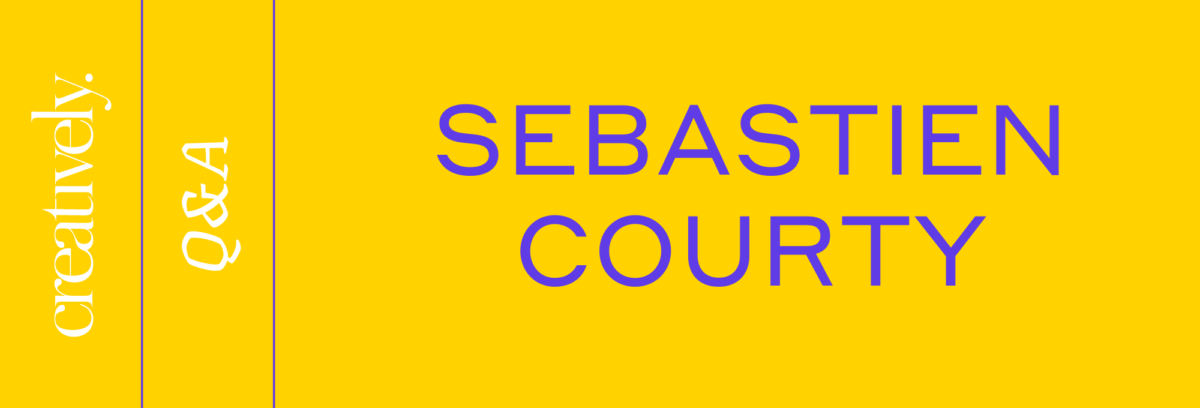Sebastien Courty is reinventing how the art world views textile art. Fascinated by the diversity of craftsmanship that textiles offer, Courty’s work is a decorative art approach. The play of texture, material, and color allows him to reimagine textiles by using traditional crafts such as weaving, embroidery, or batik.
Beginning his practice with silks, he now works with more prestigious and unexpected elements such as banana fiber, tobacco leaf, gemstones, and 24K gold threads. More recently, Courty has adopted a thread-drawing technique, laying precious threads next to one another to create 2D visuals, as seen in his “United Women” series.
Originally from France, Courty now works from his Brooklyn-based textile art studio. His work has been exhibited worldwide, including “White Print” in Paris, “Non Washable” and “Angles in Cubism” in New York, “Unknown Empire” in Beijing and the internationally-acclaimed “Totem – A Wall’s Jewelry” in Dubai, France, and New York. Earlier this year, Courty received a CODA Award for his work “Saudi Unity,” a series of twelve totems for the US Consulate in Dhahran.
You can check out more of Courty’s work here on Creatively and @hellocreatively on Instagram.
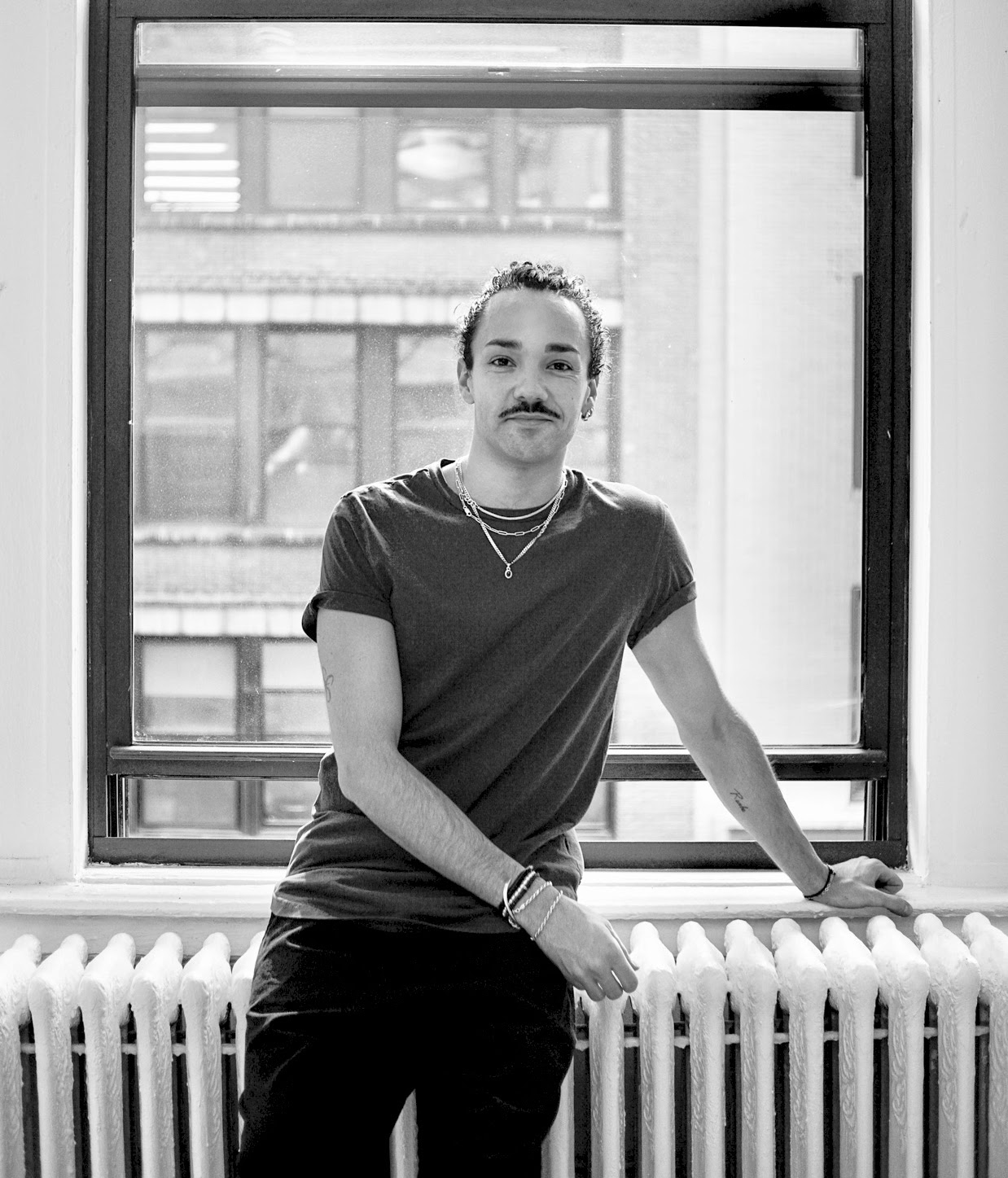
What is the first creative project you remember?
The first creative project that I worked on was right after I finished art school in Paris. I was about 20 years old and organized my first “Textile Art” exhibition. Back then, I was obsessed with silk. I remember using iron and copper sheets to rust and deteriorate the fabric, burning the edges, and using concrete or plaster to shape it a certain way. I even used melted wax on painted silk to create new textures. It was messy and experimental; I loved it! Now, I work with more prestigious and unexpected elements such as banana fiber, tobacco leaf, or 24-karat gold threads. But my first desire in any of my creations is always to combine precious, elegant, and refined components with something rough, dirty, and unrefined.
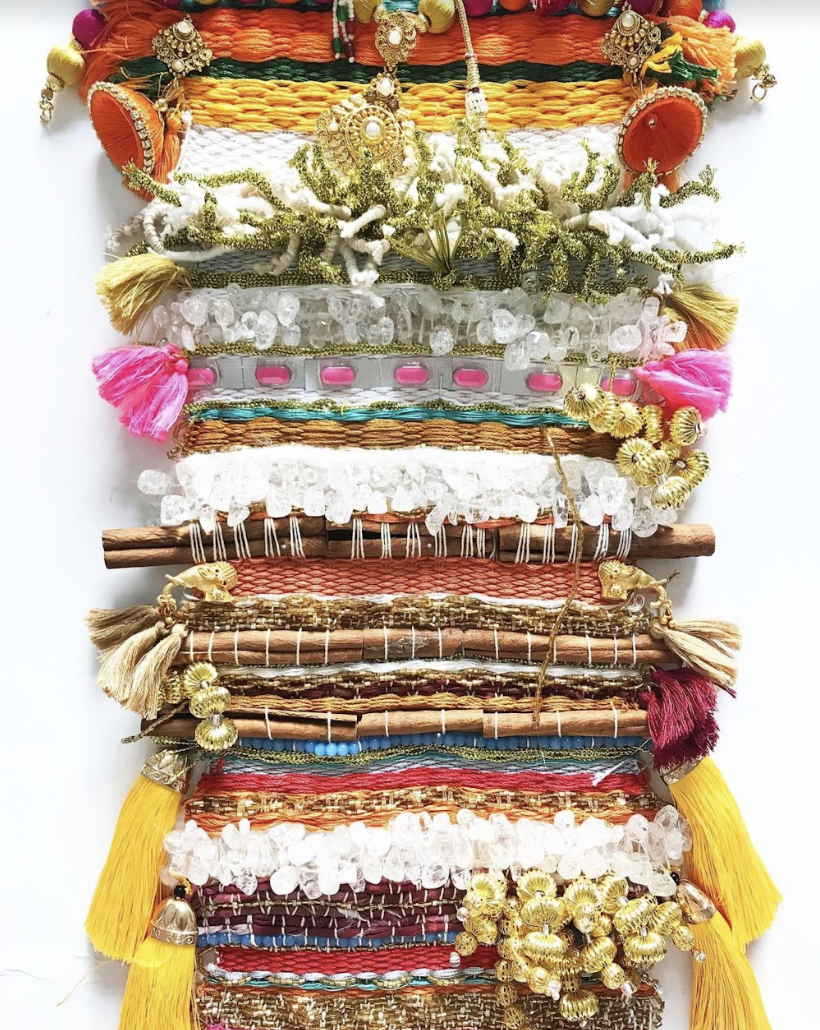
Describe your aesthetic in three words.
Delicate, conversational, and multicultural.
What was the most fulfilling collaboration you’ve worked on?
A collaboration that was truly fulfilling was the “Gold Shirt” tribute to Nelson Mandela. Inspired by one of many batik silk shirts Mandela used to wear, I designed a shirt entirely handmade with 24-karat gold threads. From the handwoven fabric to the hand-embroidered patterns, the shirt became a mesmerizing sculpture. Honoring Nelson Mandela’s legacy and wisdom, the gold represented his tenacity, his energy, and his rarity—everything this man was to all of humanity. In collaboration with Johnathan Schultz and the Nelson Mandela Foundation in South Africa, this shirt was in production for nearly a year.
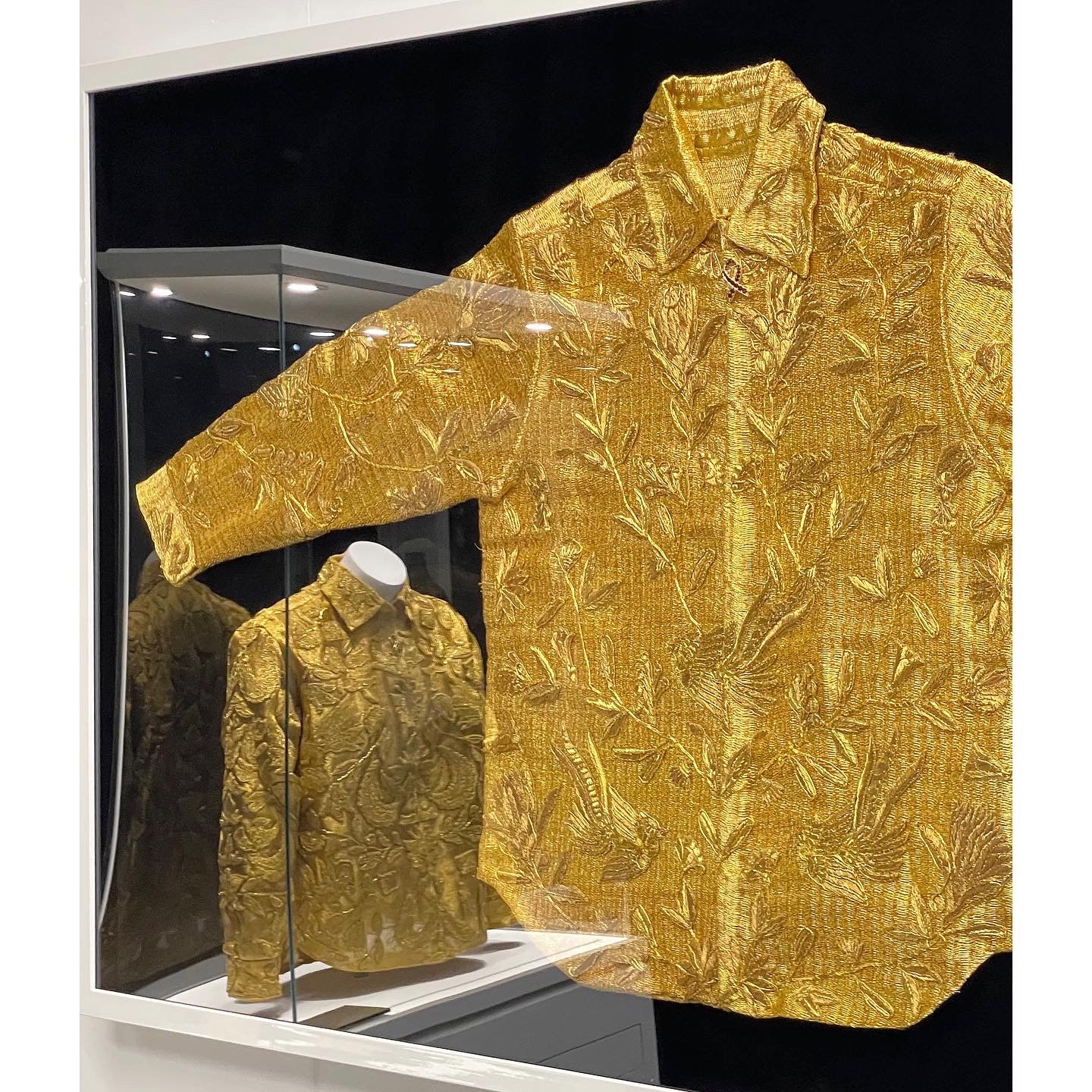
What’s one creative project that taught you something fundamental about yourself?
The beauty of being an artist is that every single project teaches me something new and enables me to discover an aspect of myself I didn’t know I had. The most important thing I had to learn is that whatever project or new work of art I am working on, I shouldn’t stop or give up until it is accomplished. No matter how many doubts arise during the creative process, I need to see things through and complete the work. Only then will I have a full understanding of the work and what to do next. The series of portraits created using the thread-drawing technique is, by far, the most challenging collection of them all. This technique consists in laying precious threads next to one another to create a 2D visual. Drawing with a thread is a technique I developed recently and as easy as it may sound, it was months of dilemmas. My creations are meticulous and require much patience which is sometimes disheartening. I found out that my curiosity was stronger than my patience. The excitement that drives me to see a new artwork for the first time pushes me to finish the job and keep the productivity going.
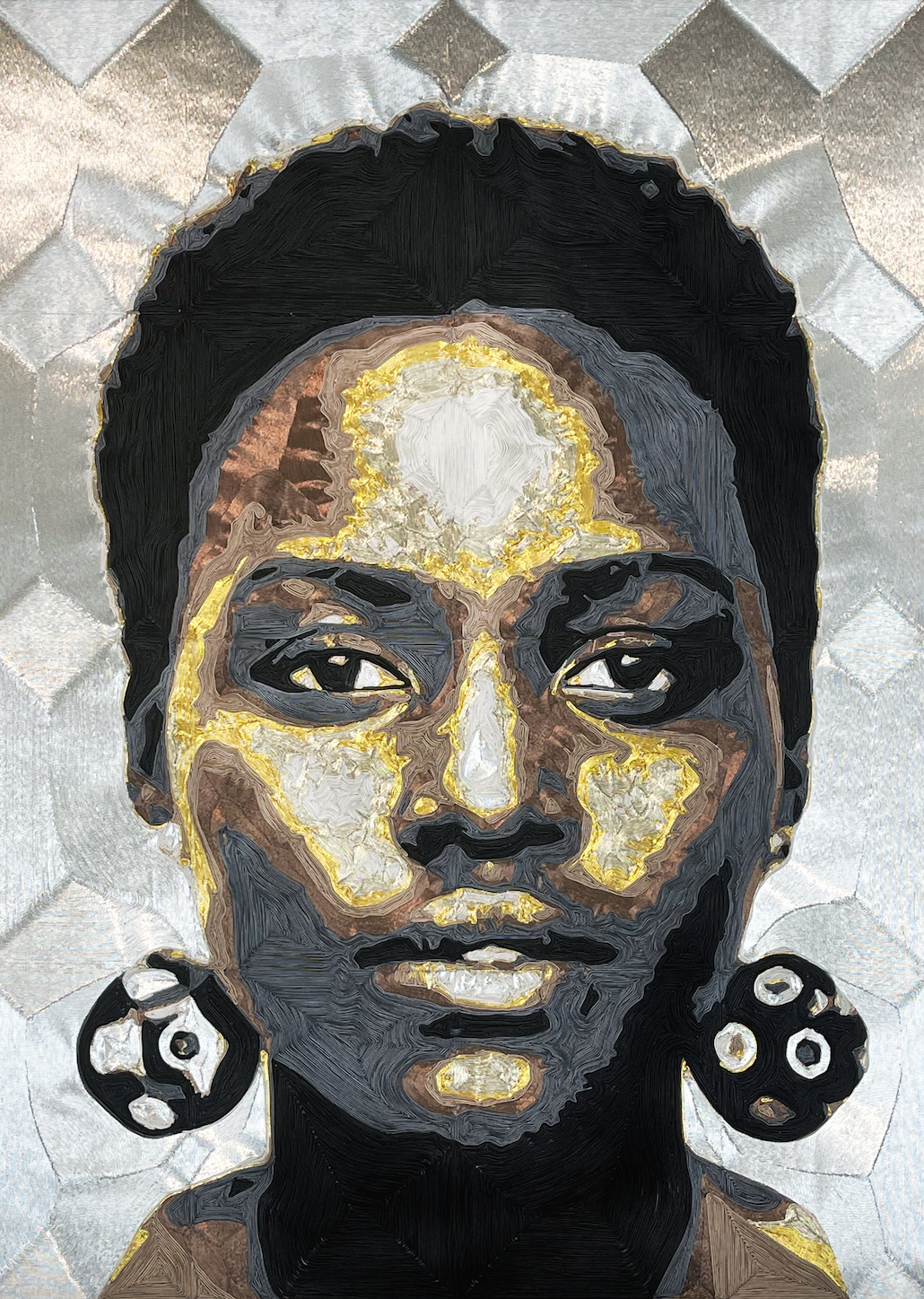
Do you think creativity is something you’re born with, or something you’re taught?
I was definitely born with it. I have been really creative since I can remember and I am sure my mom could share a couple of fun stories. That being said creativity is one thing, mastering one’s art is another. Practice and hard work are essential to living off your creativity. I practiced, failed, practiced again, and failed again until learning from my mistake became a pleasant part of the creation process, and an essential path to success.
What’s the last dream you had?
I find it very difficult to recall my dreams. The last one I remember quite clearly was about travel. I think I had the power to teleport myself or some sort, and in the blink of an eye, I could be in any location of my choosing. I believe it started in Singapore; I was discussing with a friend about the logistics for an upcoming exhibition. I, later, seemed to be in Dubai where I was working on a large art installation for a lobby of an office building. I, then, went to Japan to purchase a large quantity of 24 karat gold and silver threads to finally ended up in Central Park eating a hotdog… go figure!
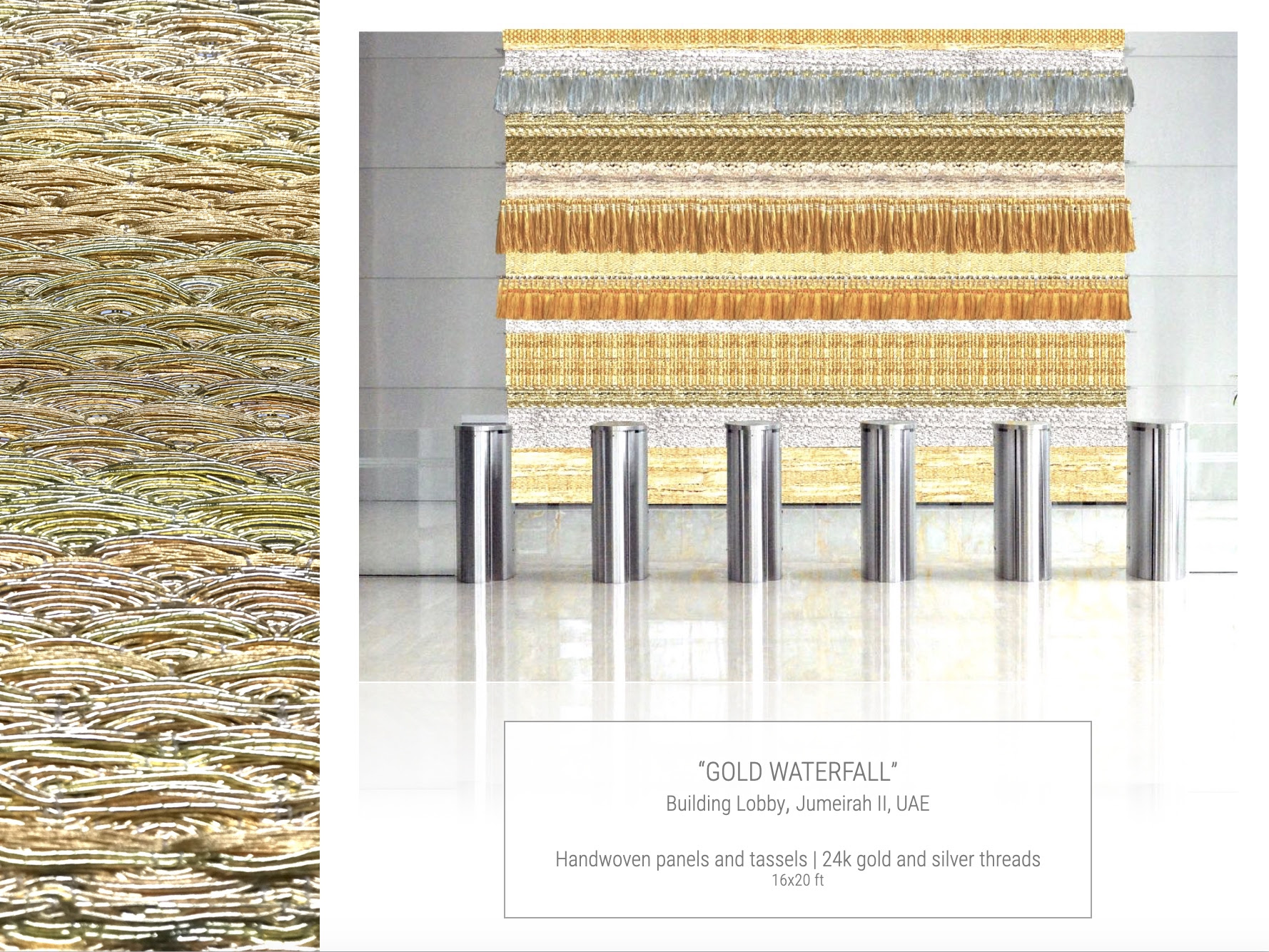
One hundred years from now, what do you hope people write about your work?
When I decided to specialize my practice in textile and fiber I wanted to challenge people’s minds. Textiles transcend the dimensions in which design encounters art in a prospective muse. My vision of textile art moves fabric-based works beyond the category of woven tapestry into a more conceptual practice that embraces strategies otherwise found in painting, sculpture, and architecture. Not limited to fibers, my work encompasses any materials that allow thread-drawing or hand-weaving methods inter alia to invent contemporary textile art.
One hundred years from now I hope people will look at my work and realize that textile has indeed its place in front of the art scene, in art galleries and art collections. More than critics from the art world and art lovers, I hope to inspire new textile and fiber artists around the world. I hope to convey a certain confidence and proof that working with textiles and fiber is recognized and appreciated as much as any other art form.
From a different point of view related to the subject of my work, I want my creations to bring a voice to communities that need to be heard and cultures that deserve to be celebrated. I want questions to be asked and answered. I want my work to open conversation and debates, but most importantly I want my work to emphasize a feeling of mutual respect and personal expression. My work is an invitation to travel and discover parts of the world one has yet to explore.
Follow @sebastiencourty on Creatively.
Creatively is more than a platform—we’re a creative collective.
Questions or feedback? Email us at feedback@creatively.life.

